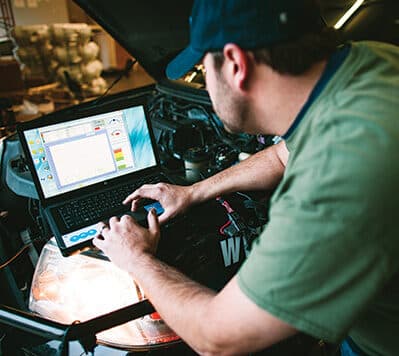How to Convert a Vehicle Engine to Propane
A vehicle conversion, in its simplest sense, means modifying an engine to a different use from its original version. The most common conversion involves modifying a gasoline engine to also run on propane, also known as autogas. This vehicle is classified as bi-fuel and allows it to seamlessly switch between the original fuel source and the newer, cleaner autogas option. Running two fuel systems effectively doubles the vehicle’s range eliminating the range anxiety associated with electric vehicles.
In December 2021, the WLPGA published a Guide to New Autogas Markets.1 In this reference guide they estimated that by the end of 2020, over 29 million vehicles worldwide had made the switch to autogas. Autogas is a mature market with advancements arriving as fast as technology will allow.
Converting your vehicle to autogas is really about adding six components: a tank, computer or ECU, fuel selector switch, filtration system, vaporizer, and injectors. The typical installation can be done by a qualified mechanic and takes about two days.
One major advantage to converting to autogas over other fuel sources is how easy it is to get started. The experts at the Missouri Propane Education & Research Council have led numerous fellow Missourians down a greener path. They can help you too. A simple inquiry is all you need to start down the path of savings. Switching to autogas will both save you money and contribute toward a greener tomorrow.
Do you still have questions about the conversion process? For those interested in the mechanical or technical side of conversions, the US Department of Energy has published What Fleets Need to Know About Alternative Fuel Vehicle Conversions, Retrofits, and Repowers.
Sources
1 – WLPGA Website: https://online.fliphtml5.com/addge/whce/#p=1
